Daknet is a wireless internet service technology designed to provide affordable connectivity to rural areas by utilizing vehicles equipped with mobile access points to transport data between kiosks and internet hubs. It enables asynchronous communication methods like email and voice messaging, eliminating the need for expensive real-time connections. Successful deployments have occurred in various projects in India and Cambodia, facilitating access to information and services for underserved populations.
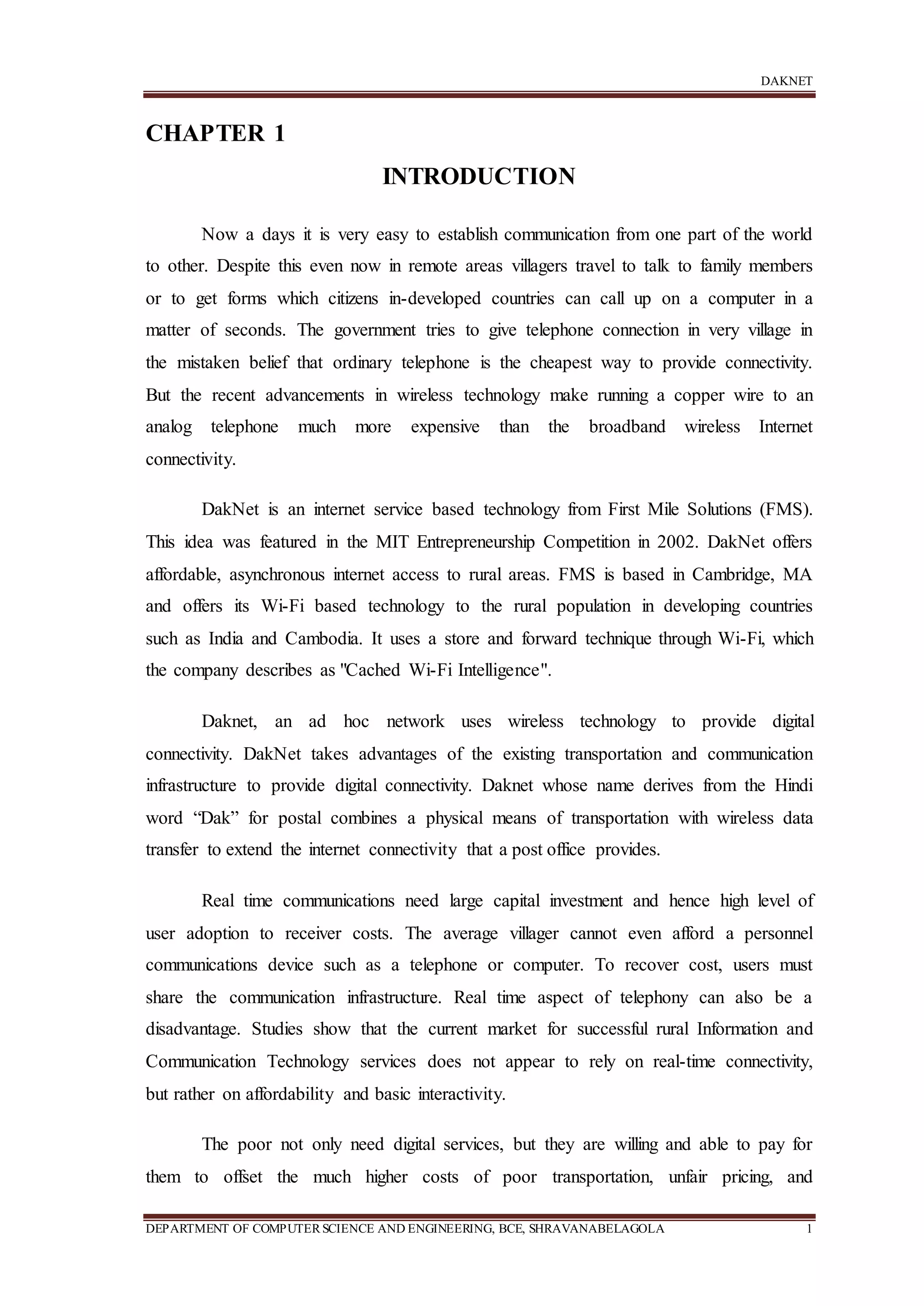
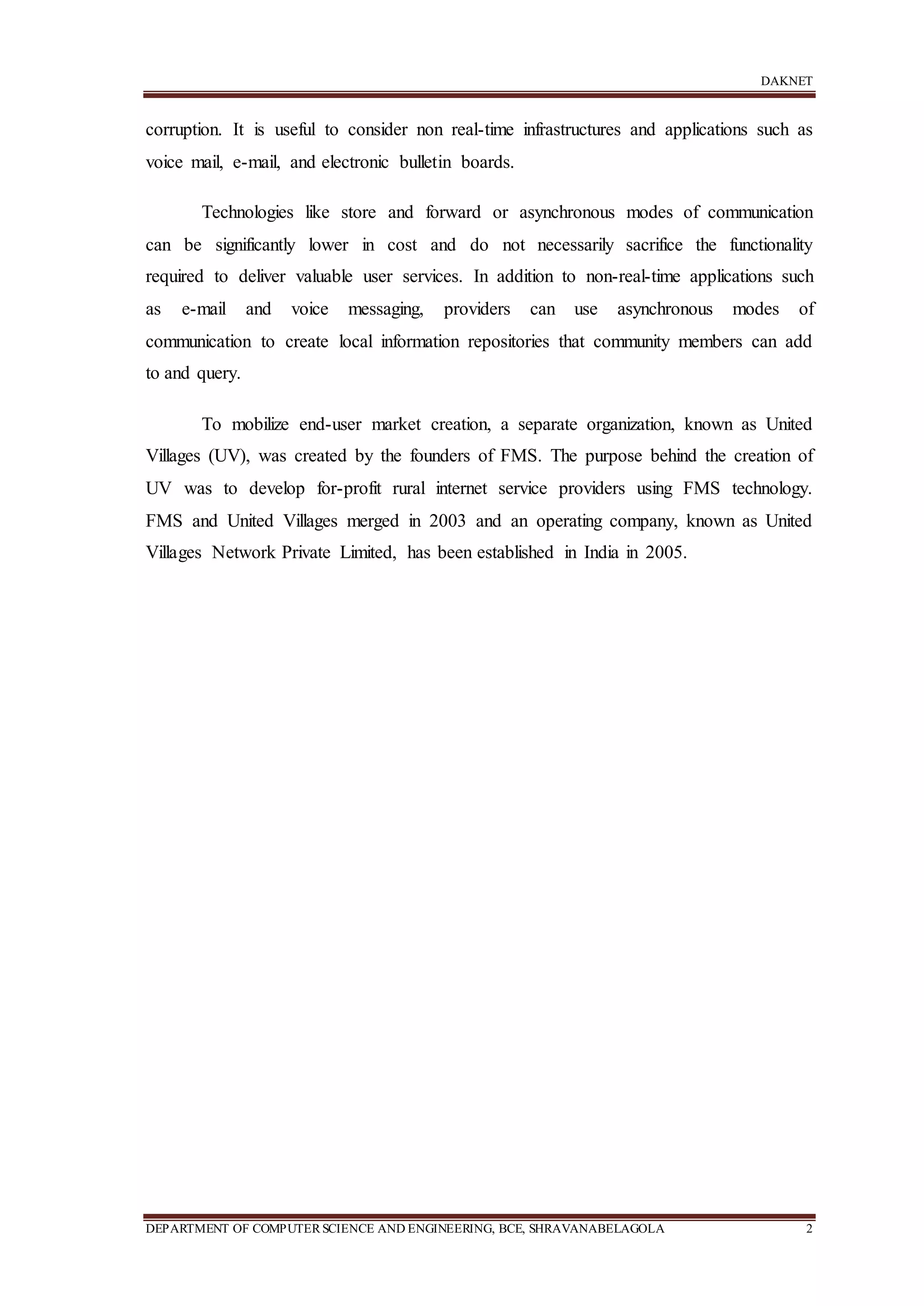
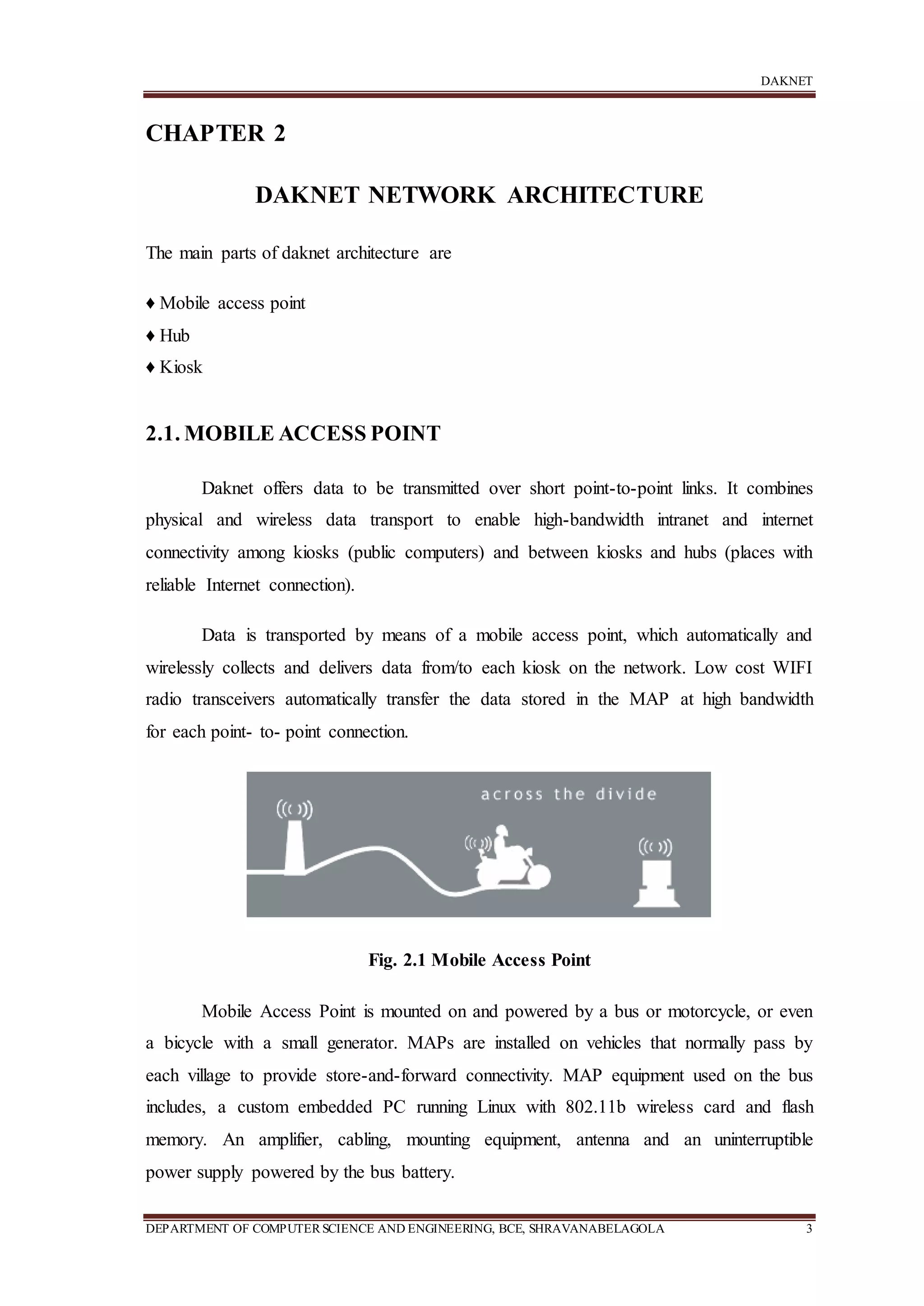

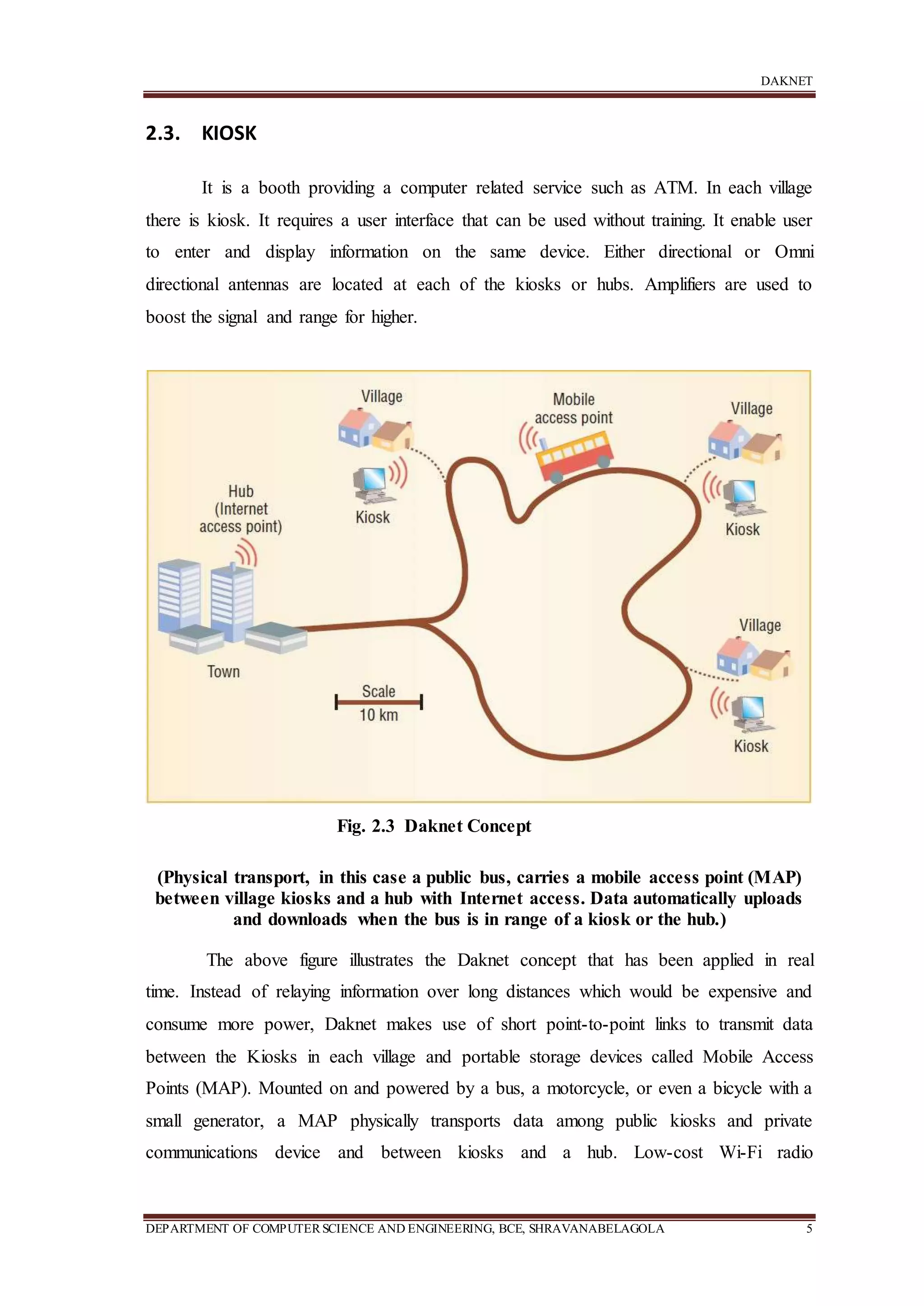
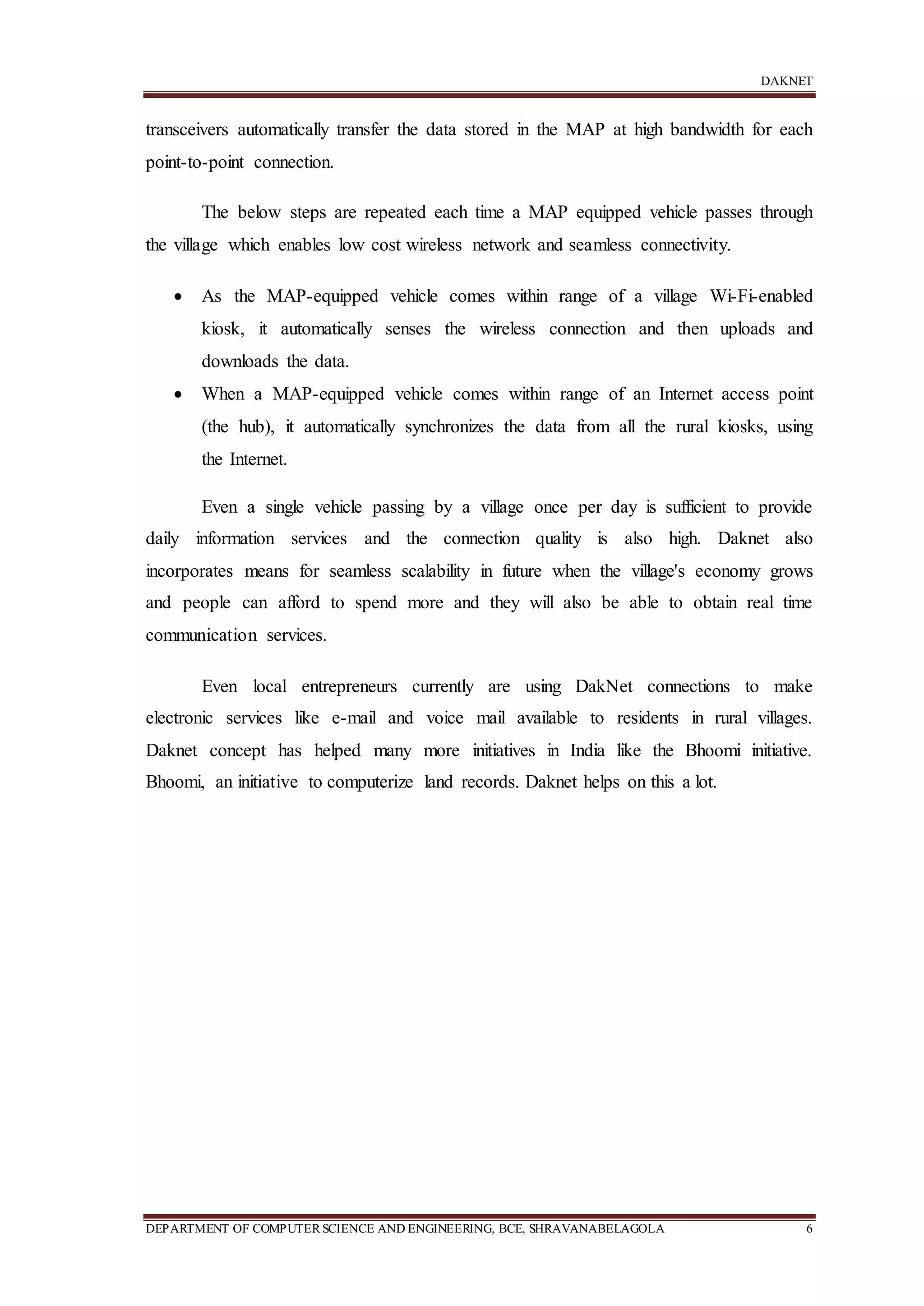
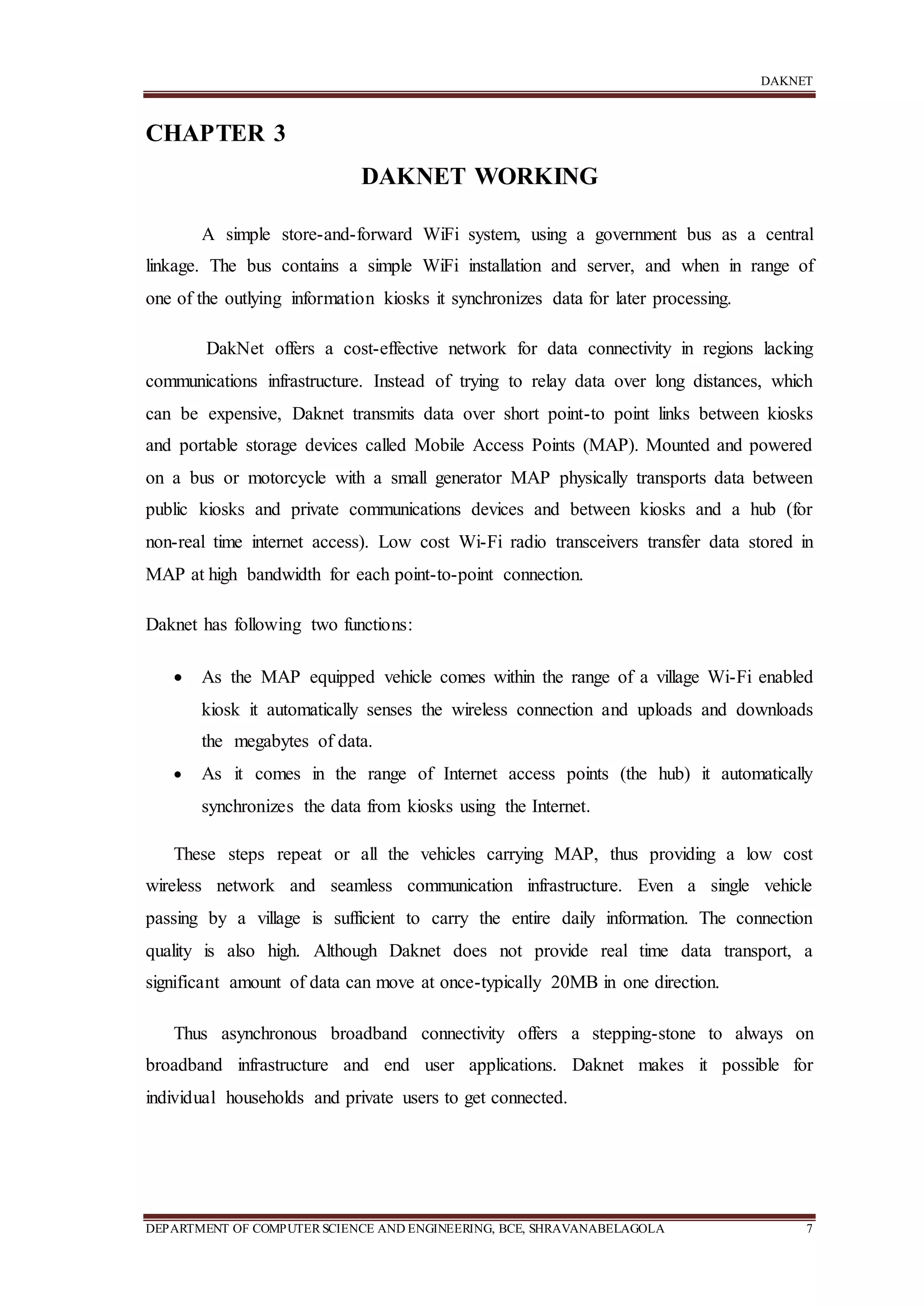
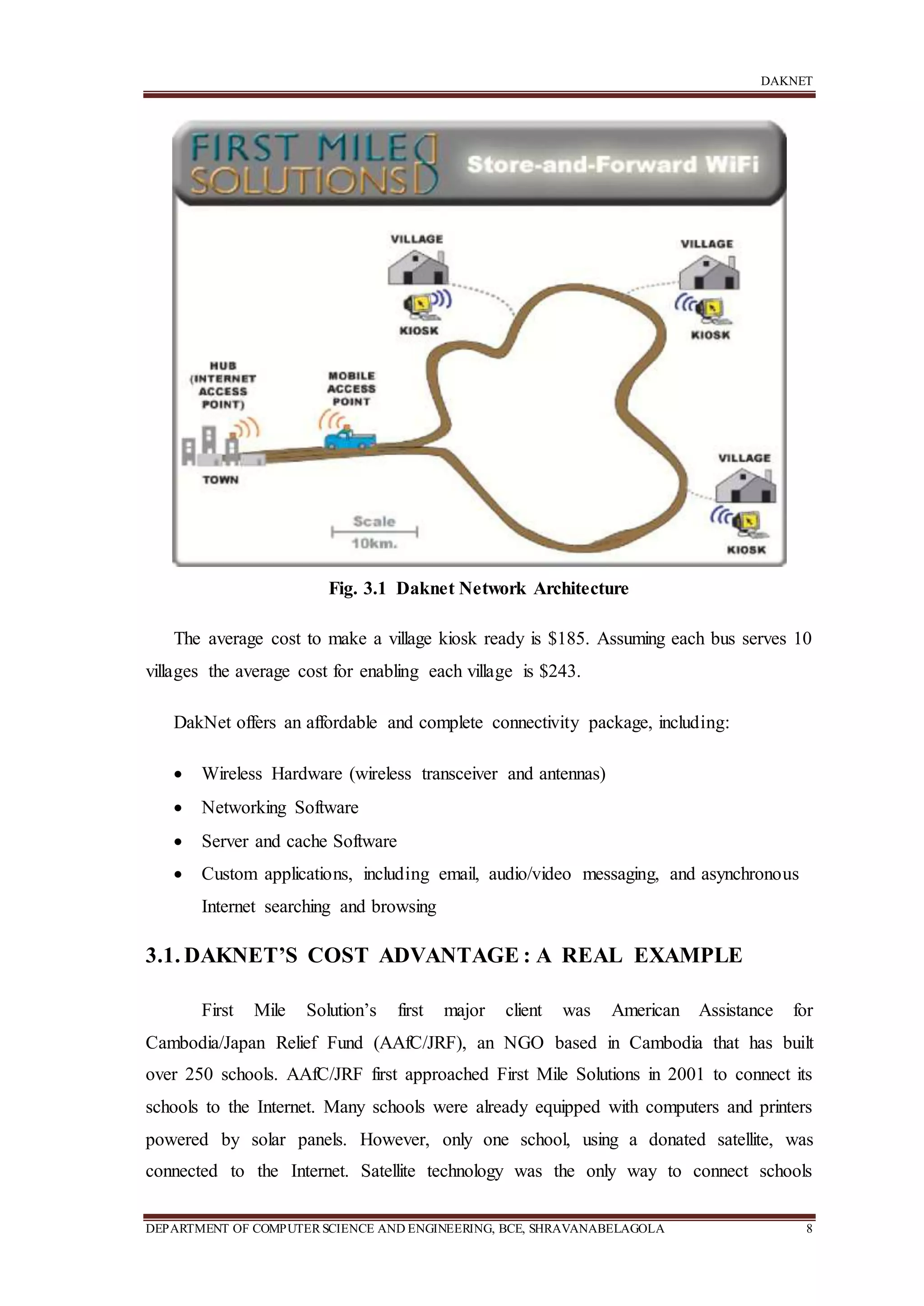





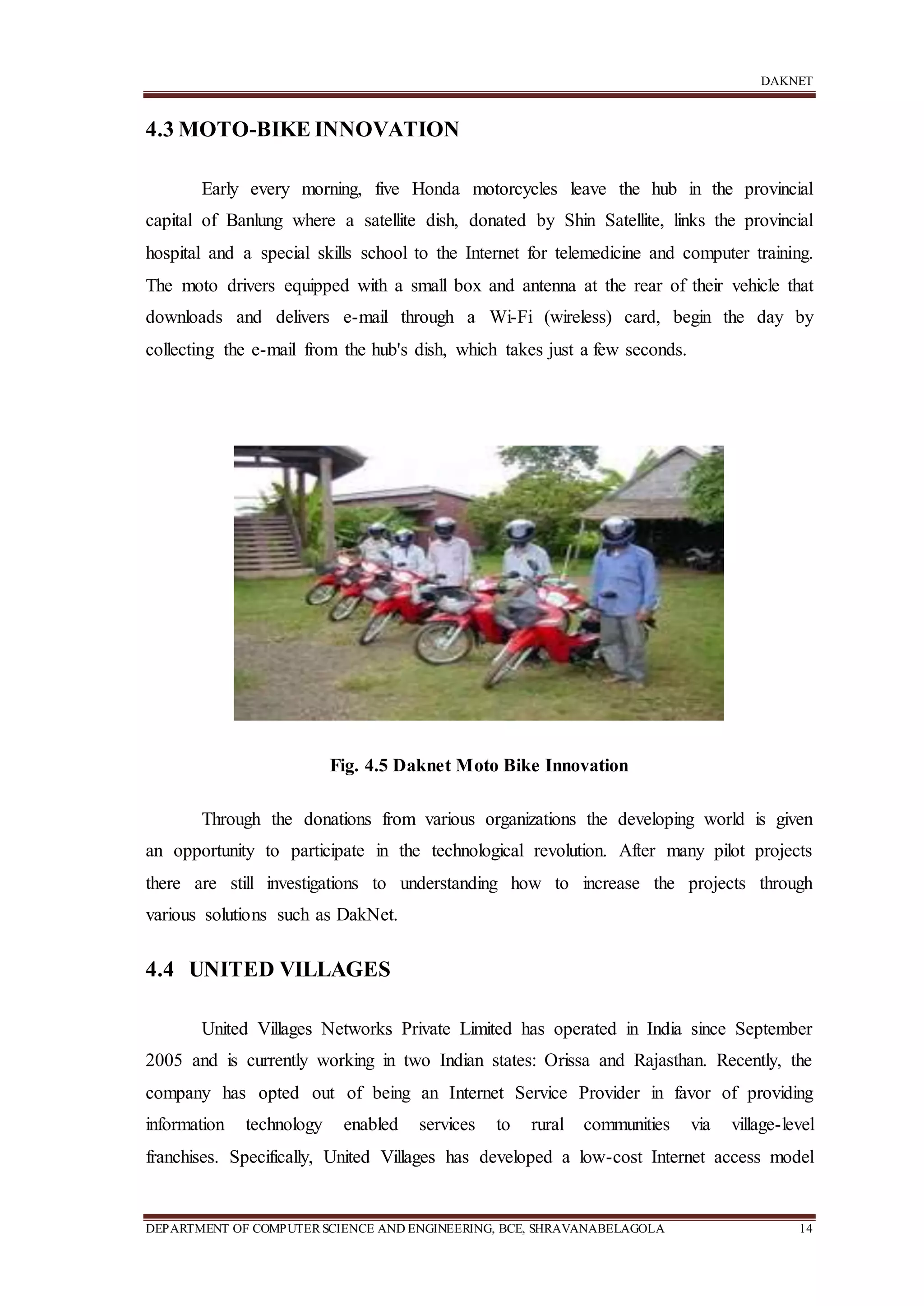
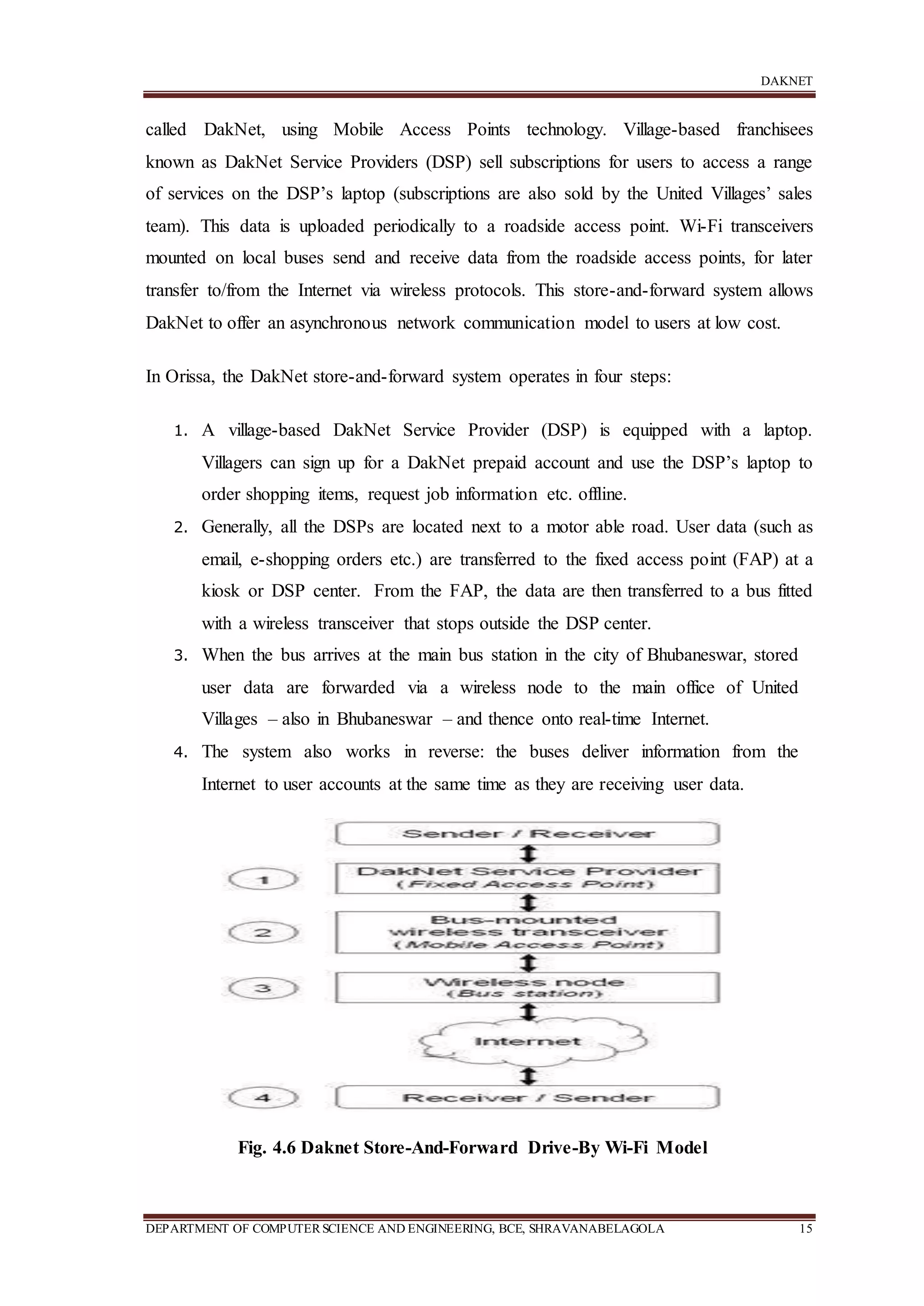
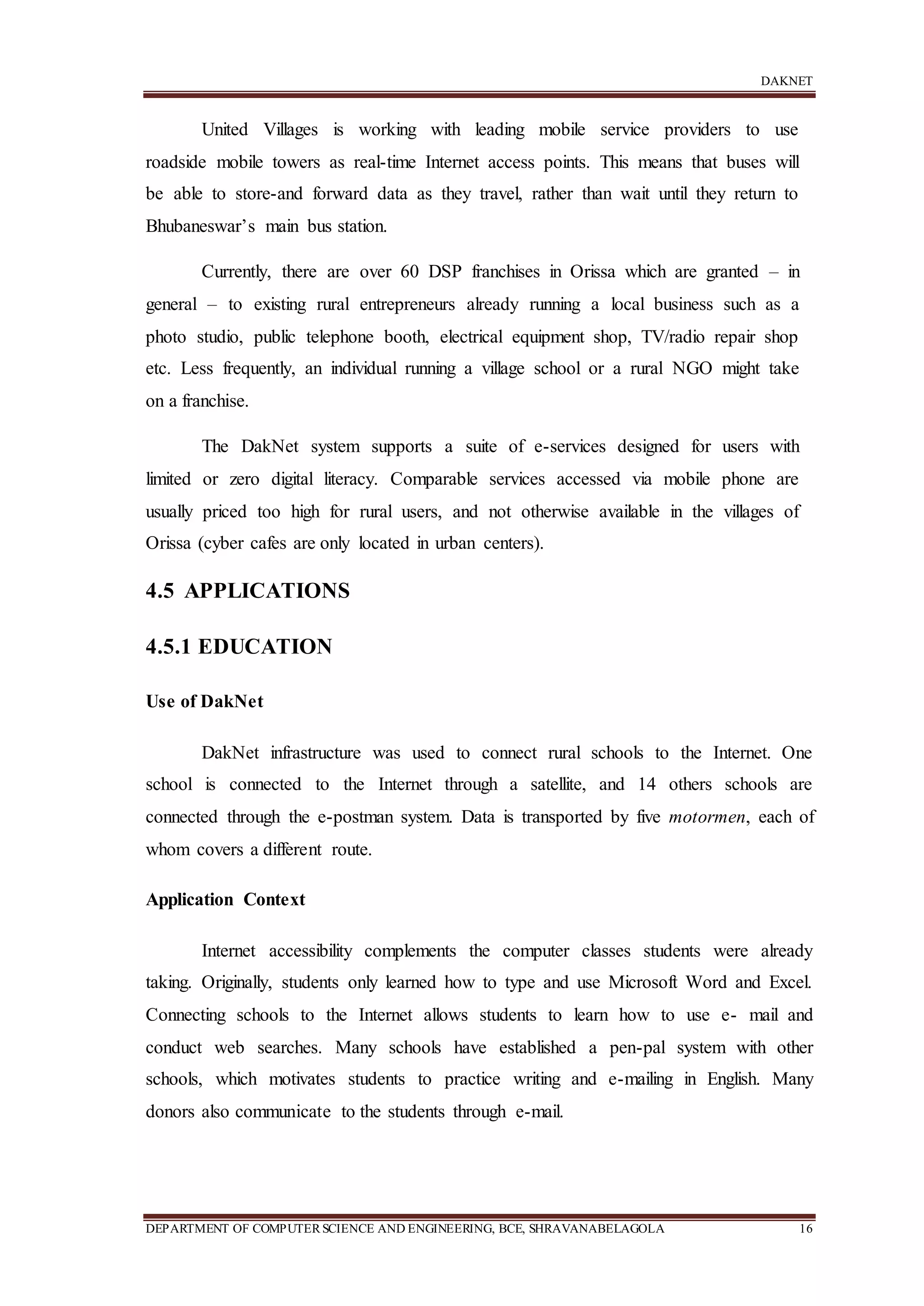
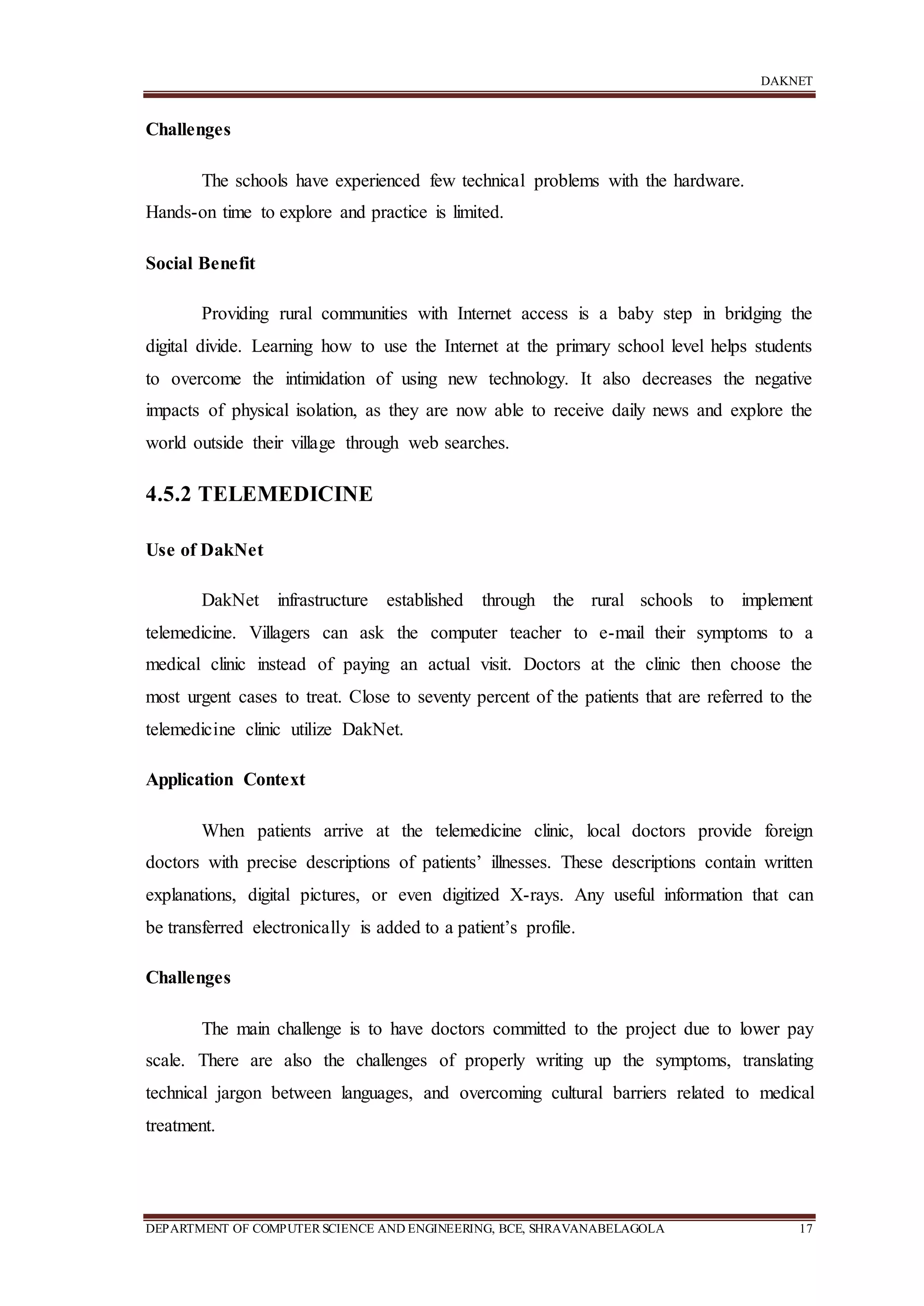
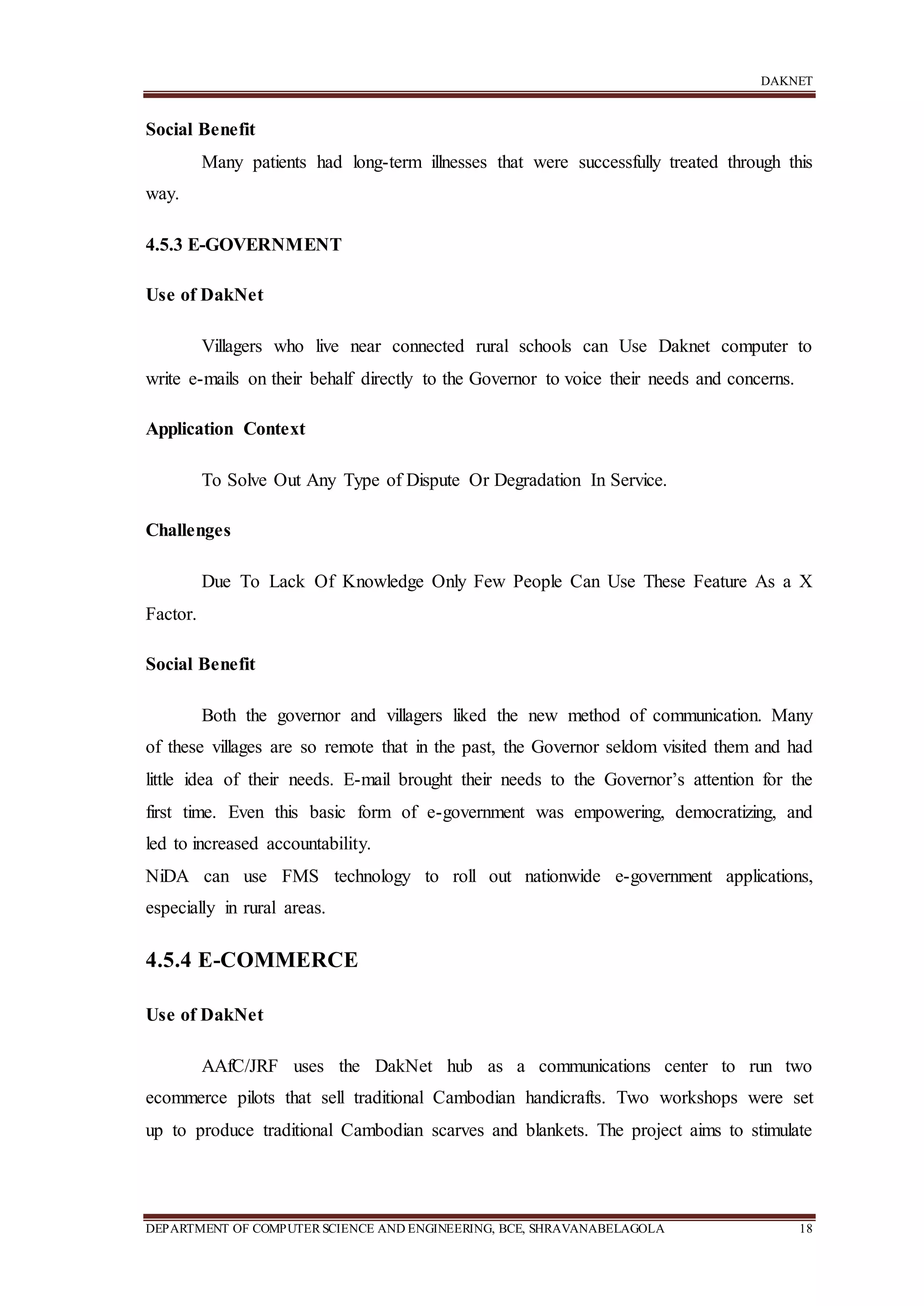


![DAKNET
DEPARTMENT OF COMPUTERSCIENCE AND ENGINEERING, BCE, SHRAVANABELAGOLA 21
REFERENCES
[1] Pentland, A et al. "Daknet: rethinking connectivity in developing nations". Mobile
communication conference. 2004.
[2] Jun Liu And Fukuda, K. "Towards taxonomy of darknet traffic". Wireless
communication and mobile computing conference (IWCMC), 2014 international
conforence
[3] Roos,s. And Strufe, T. "A contribution to analyzing and enhancing Darknet routing".
IEEE Conference on Computer Communications 2013.
[4] Qian Wang et al. "Daknet-based Inference of Internet Worm Temporal
Characteristics" information forensics and security, IEEE transaction.
[5] McManamon and Mtenzi, F. "The development and deployment of daknet." Internet
technology and secured transactions (ICITST), 2010 international conference.
[6] Mizoguchi,S. et al. "Daknet Monitoring on real-operated Networks”. Broadband,
wireless computing, communication and application (BWCCA), 2010 international
conference.](https://image.slidesharecdn.com/daknet-170422172406/75/Daknet-report-full-prepared-by-me-for-my-seminar-in-my-college-21-2048.jpg)